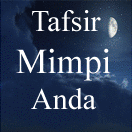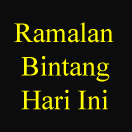The North China craton (NCC) occupies
about one million square miles (1.7 million km2) in northeastern
China, Inner Mongolia, the Yellow Sea, and North
Korea. It is bounded by the Qinling–Dabie Shan orogen to the
south, the Yinshan-Yanshan orogen to the north, the Longshoushan
belt to the west and the Qinglong-Luznxian and Jiao-
Liao belts to the east. The North China craton includes a large
area of intermittently exposed Archean crust, including circa
3.8–2.5 billion-year-old gneiss, tonalite, trondhjemite, and granodiorite.
Other areas include granite, migmatite, amphibolite,
ultramafite, mica schist and dolomitic marble, graphitic and
sillimanitic gneiss (khondalites), banded iron formation (BIF),
and metaarkose. The Archean rocks are overlain by the
1.85–1.40 billion-year-old Mesoproterozoic Changcheng
(Great Wall) system. In some areas in the central part of the
North China Craton, 2.40–1.90 billion-year-old Paleoproterozoic
sequences deposited in cratonic graben are preserved.
The North China craton is divided into two major
blocks separated by the Neoarchean Central orogenic belt in
which virtually all U-Pb zircon ages fall between 2.55 billion
and 2.50 billion years old. The Western block, also known as
the Ordos block, is a stable craton with a thick mantle root,
no earthquakes, low heat flow, and a lack of internal deformation
since the Precambrian. In contrast, the Eastern block
is atypical for a craton in that it has numerous earthquakes,
high heat flow, and a thin lithosphere reflecting the lack of a
thick mantle root. The North China craton is one of the
world’s most unusual cratons in that it had a thick tectosphere
(subcontinental lithospheric mantle) developed in the
Archean, which was present through the Ordovician as
shown by deep xenoliths preserved in Ordovician kimberlites.
However, the eastern half of the root appears to have delaminated
or otherwise disappeared during Paleozoic, Mesozoic,
or Cenozoic tectonism. This is demonstrated by Tertiary
basalts that bring up mantle xenoliths of normal “Tertiary
mantle” with no evidence of a thick root. The processes
responsible for the loss of this root are enigmatic but are
probably related to the present-day high-heat flow, Phanerozoic
basin dynamics, and orogenic evolution.
The Central orogenic belt includes belts of tonalite-trondhjemite-
granodiorite, granite, and supracrustal sequences
metamorphosed from granulite to greenschist facies. It can be
traced for about 1,000 miles (1,600 km) from west Liaoning
to west Henan. Widespread high-grade regional metamorphism
including migmatization occurred throughout the Central
orogenic belt between 2.6 billion and 2.5 billion years
ago, with final uplift of the metamorphic terrain at 1.9–1.8
billion years ago associated with extensional tectonism or a
collision on the northern margin of the craton. Amphibolite to
greenschist-grade metamorphism predominates in the southeastern
part of the Central orogenic belt, but the northwestern
part of the orogen is dominated by granulite facies to amphibolite
facies rocks, including some high-pressure assemblages
(10–13 kilobars at 850±50°C). The high-pressure assemblages
can be traced for more than 400 miles (700 km) along a linear
belt trending east-northeast. Internal (western) parts of the
orogen are characterized by thrust-related horizontal foliations,
flat-dipping shear zones, recumbent folds, and tectonically
interleaved high-pressure granulite migmatite and
metasediments. It is widely overlain by sediments deposited in
graben and continental shelf environments and intruded by
several dike swarms (2.4–2.5 billion and 1.8–1.9 billion years
ago). Several large anorogenic granites with ages of 2.2–2.0
billion years are identified within the belt. Recently, two linear
units have been documented within the belt, including a highpressure
granulite belt in the west and a foreland-thrust fold
belt in the east. The high-pressure granulite belt is separated
by normal-sense shear zones from the Western block, which is
overlain by thick metasedimentary sequences (khondalite,
younger than 2.4 billion years, and metamorphosed at 1.86
billion years).
The Hengshan high-pressure granulite belt is about 400
miles (700 km) long, consisting of several metamorphic terrains,
including the Hengshan, Huaian, Chengde, and west
Liaoning complexes. The high-pressure assemblages commonly
occur as inclusions within intensely sheared tonalitetrondhjemite-
granodiorite (2.6–2.5 billion years) and granitic
gneiss (2.5 billion years) and are widely intruded by K-granite
(2.2–1.9 billion years) and mafic dike swarms (2.40–2.45 Ga,
1.77 billion years). Locally, khondalite and turbiditic slices
are interleaved with the high-pressure granulite rocks, suggesting
thrusting. The main rock type is garnet-bearing mafic
granulite with characteristic plagioclase-orthopyroxene corona
around the garnet, which show rapid exhumation-related
decompression. An isothermal decompressive pressure-temperature-
time path can be documented within the rocks, and
the peak pressures and temperatures are in the range of
1.2–1.0 GPa, at 1,290°F–1,470°F (700°C–800°C). At least
three types of geochemical patterns are shown by mafic
rocks of the high-pressure granulites, indicating a tectonic
setting of active continental margin or island arc. The highpressure
granulites were formed through subduction-collision,
followed by rapid rebound-extension, recorded by
2.5–2.4 billion-year-old mafic dike swarms and graben-related
sedimentary sequences in the Wutai Mountain–Taihang
Mountain areas.
The Qinglong foreland basin and fold-thrust belt is
north to northeast-trending and is now preserved as several
relict folded sequences (Qinglong, Fuping, Hutuo, and
Dengfeng). Its general sequence from bottom to top can be
further divided into three subgroups of quartzite-mudstonemarble,
turbidite, and molasse, respectively. The lower subgroup
of quartzite-mudstone-marble is well preserved in
central sections of the Qinglong foreland basin (Taihang
Mountain), with flat-dipping structures, interpreted as a passive
margin developed prior to 2.5 Ga on the Eastern block.
It is overlain by lower grade turbidite and molasse type sediments.
The western margin of Qinglong foreland basin is
intensely reworked by thrusting and folding and is overthrust
by the overlying orogenic complex (including the
tonalitic-trondhjemitic-granodiorotic gneiss, ophiolites, accretionary
sediments). To the east its deformation becomes
weaker in intensity. The Qinglong foreland basin is intruded
by a gabbroic dike complex consisting of 2.4 billion-year-old
diorite and is overlain by graben-related sediments and flood
basalts. In the Wutai and North Taihang basins, many ophiolitic
blocks are recognized along the western margin of the
foreland thrust-fold belt. These consist of pillow lava, gabbroic
cumulates, and harzburgite. The largest ophiolitic
thrust complex imbricated with foreland basin sedimentary
rocks is up to five miles (10 km) long, preserved in the
Wutai-Taihang Mountains.
Several dismembered Archean ophiolites have been identified
in the Central orogenic belt, including some in Liaoning
Province, at Dongwanzi, north of Zunhua, and at Wutai
Mountain. The best studied of these are the Dongwanzi and
Zunhua ophiolitic terranes. The Zunhua structural belt of
the Eastern Hebei Province preserves a cross section through
most of the northeastern part of the Central orogenic belt.
This belt is characterized by highly strained gneiss, banded
iron formation, 2.6–2.5 billion-year-old greenstone belts and
mafic to ultramafic complexes in a high-grade ophiolitic
melange. The belt is intruded by widespread 2.6–2.5 billionyear-
old tonalite-trondhjemite gneiss, 2.5 billion-year-old
granites, and is cut by ductile shear zones. The Neoarchean
high-pressure granulite belt (Chengde-Hengshan HPG)
strikes through the northwest part of the belt. The Zunhua
structural belt is thrust over the Neoarchean Qianxi-Taipingzhai
granulite-facies terrane, consisting of enderbitic to
charnockitic gneiss forming several small dome-like structures
southeast of the Zunhua belt. The Zunhua structural
belt clearly cuts across the dome—like Qian’an-Qianxi structural
patterns to the east. The Qian’an granulite-gneiss dome
(3.8–2.5 billion years old) forms a large circular dome in the
southern part of the area and is composed of tonalitic-trondhjemitic
gneiss and biotite-granite. Mesoarchean (2.8–3.0 billion
years old) and Paleoarchean (3.50–3.85 billion years
old) supracrustal sequences outcrop in the eastern part of the
region. The Qinglong Neoarchean amphibolite to greenschist
facies supracrustal sequence strikes through the center of the
area and is interpreted to be a foreland fold-thrust belt,
intruded by large volumes of 2.4 billion-year-old diorite in
the east. The entire North China craton is widely cut by at
least two Paleoproterozoic mafic dike swarms (2.5–2.4 and
1.8–1.7 billion years old), associated with regional extension.
Mesozoic-Cenozoic granite, diorite, gabbro, and ultramafic
plugs occur throughout the NCC and form small intrusions
in some of the belts.
The largest well-preserved sections of the Dongwanzi
ophiolite are located approximately 120 miles (200 km)
northeast of Beijing in the northeastern part of the Zunhua
structural belt, near the villages of Shangyin and Dongwanzi.
The belt consists of prominent amphibolite-facies mafic-ultramafic
complexes in the northeast sector of Zunhua structural
belt. The southern end of the Dongwanzi ophiolite belt near
Shangyin is complexly faulted against granulite-facies gneiss,
with both thrust faults and younger normal faults present.
The main section of the ophiolite dips steeply northwest, is
approximately 30 miles (50 km) long, and is 3–6 miles (5–10
km) wide. A U/Pb-zircon age of 2.505 billion years for two
gabbro samples from the Dongwanzi ophiolite shows that
this is the oldest, relatively complete ophiolite known in the
world. However, parts of the central belt are intruded by a
mafic/ultramafic Mesozoic pluton with related dikes.
The base of the ophiolite is strongly deformed and is
intruded by the 2.391 billion-year-old Cuizhangzi dioritetonalite
complex. The Dongwanzi ophiolite is associated with
a number of other amphibolite-facies belts of mafic plutonic
and extrusive igneous rocks in the Zunhua structural belt.
These mafic to ultramafic slices and blocks can be traced
regionally over a large area from Zunhua to West Liaoning
(about 120 miles or 200 km). Much of the Zunhua structural
belt is interpreted as a high-grade ophiolitic mélange, with
numerous tectonic blocks of pillow lava, BIF, dike complex,
gabbro, dunite, serpentinized harzburgite, and podiform
chromitite in a biotite-gneiss matrix, intruded extensively by
tonalite and granodiorite. Cross-cutting granite has yielded
an age of 2.4 billion years. Blocks in the mélange correlate
with the Dongwanzi and other ophiolitic fragments in the
Zunhua structural belt. This correlation is supported by Rhenium-
Osmium (Re-Os) age determinations on several of these
blocks, revealing that they are 2.54 Ga old.
The Eastern and Western blocks of the North China craton
collided at 2.5 billion years ago during an arc/continent
collision, forming a foreland basin on the Eastern block, a
granulite facies belt on the Western block, and a wide orogen
between the two blocks. This collision was followed rapidly
by post-orogenic extension and rifting that formed mafic dike
swarms and extensional basins along the Central orogenic
belt and led to the development of a major ocean along the
north margin of the craton. An arc terrane developed in this
ocean and collided with the north margin of the craton by
2.3 Ga, forming an 850-mile (1,400-km) long orogen known
as the Inner Mongolia–Northern Hebei orogen. A 1,000-mile
(1,600-km) long granulite-facies terrain formed on the southern
margin of this orogen, representing a 120-mile (200-km)
wide uplifted plateau formed by crustal thickening. The orogen
was converted to an Andean-style convergent margin
between 2.20 billion and 1.85 billion years ago, recorded by
belts of plutonic rocks, accreted metasedimentary rocks, and
a possible back arc basin. A pulse of convergent deformation
is recorded at 1.9–1.85 billion years across the northern margin
of the craton, perhaps related to a collision outboard of
the Inner Mongolia–Northern Hebei orogen and closure of
the back arc basin. This event caused widespread deposition
of conglomerate and sandstone of the basal Changcheng
Series in a foreland basin along the north margin of the craton.
At 1.85 billion years the tectonics of the North China
craton became extensional, and a series of aulacogens and
rifts propagated across the craton, along with the intrusion of
mafic dike swarms. The northern granulite facies belt underwent
retrograde metamorphism and was uplifted during
extensional faulting. High-pressure granulites are now found
in the areas where rocks were metamorphosed to granulite
facies and exhumed two times, at 2.5 billion and 1.8 billion
years ago, exposing rocks that were once at lower crustal levels.
Rifting led to the development of a major ocean along the
southwest margin of the craton, where oceanic records continue
until 1.5 billion years ago.
See also ARCHEAN; OPHIOLITES.

















Tidak ada komentar:
Posting Komentar
Catatan: Hanya anggota dari blog ini yang dapat mengirim komentar.